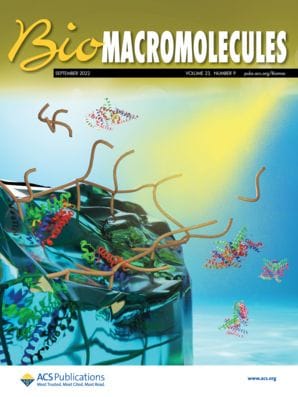In this interview, Prof. Pandit shares his experiences publishing under an ACS read and publish agreement and reflects on the broader implications of open access at the institutional level—including both the opportunities it creates and the complexities it introduces.

As part of an ongoing series here on ACS Axial, we’re interviewing authors and librarians from around the world to find out more about their research, their published work, and the impact that open science is having on a changing landscape of research communication. This time, we talked to Prof. Abhay Pandit, Director of the Centre for Research in Medical Devices at the University of Galway, Ireland.
We inhabit a rapidly changing world, and with advancements in artificial intelligence and other technologies, the landscape of academic publishing is likely to undergo substantial transformation.
What can you tell us about your group's current research focus?
We work in the field of biomaterials, and our current focus is on designing biomaterials that can influence host responses.
Could you summarize the work in your paper, "Interactions between Nitric Oxide and Hyaluronan Implicate the Migration of Breast Cancer Cells"?
In the context of constructive design, many cancers exhibit a high density of blood vessels that facilitates the proliferation of cancerous cells. A potential strategy to combat these cancers involves disrupting vascular processes. Nitric oxide promotes angiogenesis, the formation of new blood vessels, thereby accelerating tumor growth. We have developed a construct, specifically a gel, that releases hemin. Hemin is a compound that inhibits nitric oxide, thereby potentially arresting the growth of these blood vessels.
This was published in Biomacromolecules—tell me about the experience.
Overall, the submission was satisfactory and straightforward. Biomacromolecules is esteemed within the field as a reputable journal, and we considered it an appropriate venue for this article.

Interactions between Nitric Oxide and Hyaluronan Implicate the Migration of Breast Cancer Cells
DOI: 10.1021/acs.biomac.2c00545
What kind of impact do you think the work has had so far?
At this juncture, it is premature to garner substantial interest from the industry in developing these technologies. Extensive preclinical studies, validation, and model development are necessary, which require considerable time before the potential application of these technologies in medicine can be investigated. However, subsequent studies have indicated that this line of enquiry is promising, and we are committed to advancing in this direction.
Amir M. Alsharabasy, post-doctoral candidate and the principal author of the paper, has had remarkable engagement with academic community, as reflected by the awards he has garnered at various conferences for his research. This suggests a substantial interest in this study. Additionally, the paper has received a commendable number of citations since its publication three years ago, which is encouraging for future studies. Given the positive reception to date, I am confident that our team's work is well regarded in the field of nitric oxide research.
The article was published open access under your institution's agreement with ACS. How did you discover this was available?
This was a straightforward process. We are aware of the publishers with whom we have established agreements. Typically, this operates through a quota system, necessitating strategic timing based on the remaining quotas. Occasionally, we must select journals where the quota is still available; however, this was not applicable in the present study. Our research funding agency mandates that our publications be accessible through open access. Consequently, we are obligated to select journals based on these criteria.
What are your thoughts on open access as a general concept?
I believe that open access (OA) is necessary. Substantial research is conducted using taxpayer funds, and it is imperative that the public be informed of the outcomes. However, I contend that the financial requirements for publishing in open access are considerable, which presents a concern. While I support the principle of OA, my issue lies with its current funding mechanisms and the need for a reevaluation of how it should be financed. This is a general observation regarding open access, and I am aware that others share this perspective as well.
What are your thoughts on open science workflows more generally (e.g. preprints, open data, transparent peer review)?
We have submitted several papers to bioRxiv; however, the field has not yet fully embraced the practice of pre-printing. This situation may evolve in the future, as it has in other fields. One contributing factor is that PhD students are often engaged in numerous research projects and require their publications to be recognized. If they solely rely on preprints, they may be at a disadvantage in securing employment compared to those who publish in established journals. In this context, it is essential to consider their career prospects. Nonetheless, my research group does utilize bioRxiv, as the process of publishing a final article in a journal can be time-consuming, whereas preprints are available almost immediately.
What do you think are the biggest recent developments in open science and open access?
One significant development is the increasing resistance of some universities to certain publishers regarding the persistent costs associated with OA. I would like to extend this observation by asserting that many publishers have journals that impose substantial fees for open access while lacking rigorous quality control. The subsequent step, in my view, should involve identifying these journals and discouraging publication within them, as this poses a credibility issue for both scientists and the institutions that employ them.
Where do you see OA in 10 years' time?
In a decade, universities may cease funding OA initiatives; however, predicting this with certainty is challenging because of the significant developments over the past ten years. We inhabit a rapidly changing world, and with advancements in artificial intelligence and other technologies, the landscape of academic publishing is likely to undergo substantial transformation.
Certain publishing houses may face obsolescence due to constraints on research and institutional budgets, which, if stretched beyond their limits, could result in a bifurcated system of elite and non-elite institutions. This scenario may lead to a division between countries that can afford open access and those that cannot, compelling the latter to seek alternative publishing avenues and methods for recognizing their publication metrics. Furthermore, it is imperative to establish a new peer-review system, as the current model is widely acknowledged to be flawed. A significant portion of the existing system could potentially be replaced by AI-driven methodologies.
What do you think you'd be doing if you weren't a researcher?
Were I not engaged in the fields of science and engineering, I would likely pursue a career in the arts, writing, or another creative endeavor. My current profession affords me the lifestyle I enjoy; however, in its absence, I would still seek alternative pursuits. Numerous career opportunities exist, and the closure of one path often leads to the opening of new paths. Consequently, I have never perceived my current vocation as the only option available to me.
